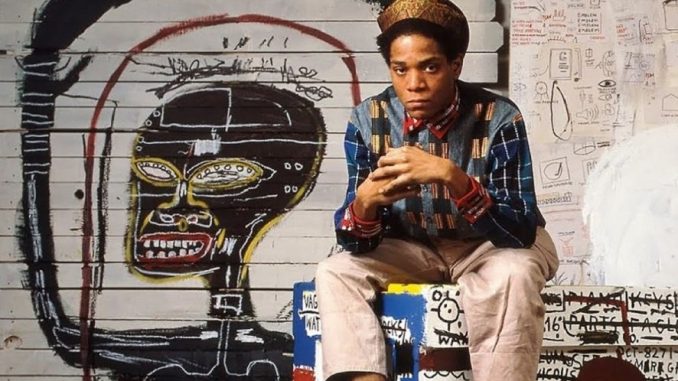
Perhaps you first heard about Jean-Michel Basquiat earlier this year when his painting, Untitled (1982), sold for a record $110.5 million, making his art one of the most expensive painting of all time.
Or, you heard about him in 2013, when American rapper-mogul, Jay Z, bought his painting, Mecca, for $4.5 million. In fact, the rapper has consistently made reference to the artist, most notably in the song Picasso on his album Magna Carta Holy Grail, where he proclaimed, “I’m the new Jean-Michel”.
Basquiat is an important and rising fixture in popular American culture, albeit posthumously, and as such, a notable figure in the Pan-African dialogue.
He was born on this day, December 22nd, 1960, to a Haitian father and a mother of Puerto-Rican descent in Brooklyn. He experienced a great deal at a young age; he was in car accident that resulted in a splenectomy at age 7, his parents divorced at the same age; his mother, who first introduced him to art, was committed into a mental institution, and he dropped out of school by the age of 15. But within a few years, he went from being homeless and unemployed to selling his paintings for $25,000.
Although many people know him for his celebrity, as he was friends with the pop artist, Andy Warhol, wore Armani suits splattered with paint from his work, and dated Madonna, the painter’s work was politic and deserves its own fanfare.
Basquiat was intentional and well versed in the social issues of his time. He once said, “the black person is the protagonist in most of my paintings. I realized that I didn’t see many paintings with black people in them.” New York-based writer and activist Chaédria LaBouvier, explains further on the importance of Basquiat’s work for the anti-police brutality and larger Black Lives Matter Movement of the early 1980s:
Basquiat’s painting, Defacement (The Death of Michael Stewart), 1983, is especially poignant: “It depicts the killing of Michael Stewart. He was beaten by NYC police officers, in the transit station, the First Avenue station in Manhattan, New York. Michael was beaten on September 15th, was in a coma for 13 days, and died on September 28th. Jean-Michel was devastated and went over to Keith Haring’s studio to paint this painting on the side of a wall.”
LaBouvier continues, “I think Basquiat was aware that this was not just about Michael Stewart or even him, but that there is a history of state violence against the black body”.
Basquiat died at the age of 27 from a heroin overdose but he lives forever through his art and the impact of his work and influence on American movements and pop culture.
by: Bridget Boakye
Source
